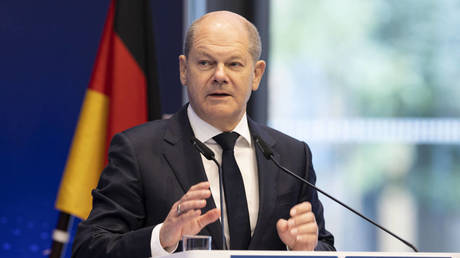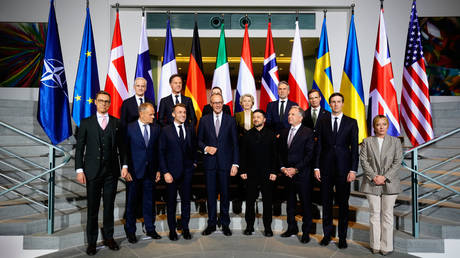
Three German-made Iris-Ts will be sent “as soon as possible,” Chancellor Olaf Scholz has said
German Chancellor Olaf Scholz said he was “glad” that modern German-made air defense systems, including the Iris-T, are now being used in Ukraine, adding that three more of these systems will be delivered “as soon as possible.”
Speaking at the German-Ukrainian Economic Forum in Berlin, he also condemned what he called “Russia’s ruthless missile attacks” on the country’s infrastructure and said that “we must do everything to protect Ukrainian cities and towns.”
“Iris-T can defend an entire big city from missiles and drones,” the chancellor said, adding that Germany “strongly supports” Ukraine in its ongoing conflict with Russia and would continue to do so “as long as it is necessary,” together with other “partners.”
The IRIS-T SLM is a ground-based air defense system capable of intercepting incoming missiles at an altitude of up to 20km and a distance of up to 40km, according to German media. Scholz initially promised these systems to Ukraine back in June, despite the fact that even Germany’s armed forces, the Bundeswehr, did not have them in stock at that time. The only IRIS-T systems Germany does have in its arsenal are air-to-air missiles mounted on its Eurofighter and Tornado jets.
A total of four units consisting of a command vehicle, radar vehicle, and a truck-mounted launcher were scheduled to arrive in Ukraine. So far, Germany has only delivered one such unit, which was done earlier in October. The others were expected to be supplied to Kiev no sooner than at some point in 2023.
The German magazine Der Spiegel earlier claimed that the remaining three units promised by Berlin had not yet been manufactured. Some media reports also suggested that Kiev had requested at least a dozen of these air defense systems and offered to purchase them directly from the German manufacturer, Diehl Defense.
Germany has sent over €743 million ($728 million) worth of arms to Ukraine, including multiple deliveries of self-propelled Gepard anti-aircraft guns and PzH 2000 howitzers, since the start of the conflict in late February.




